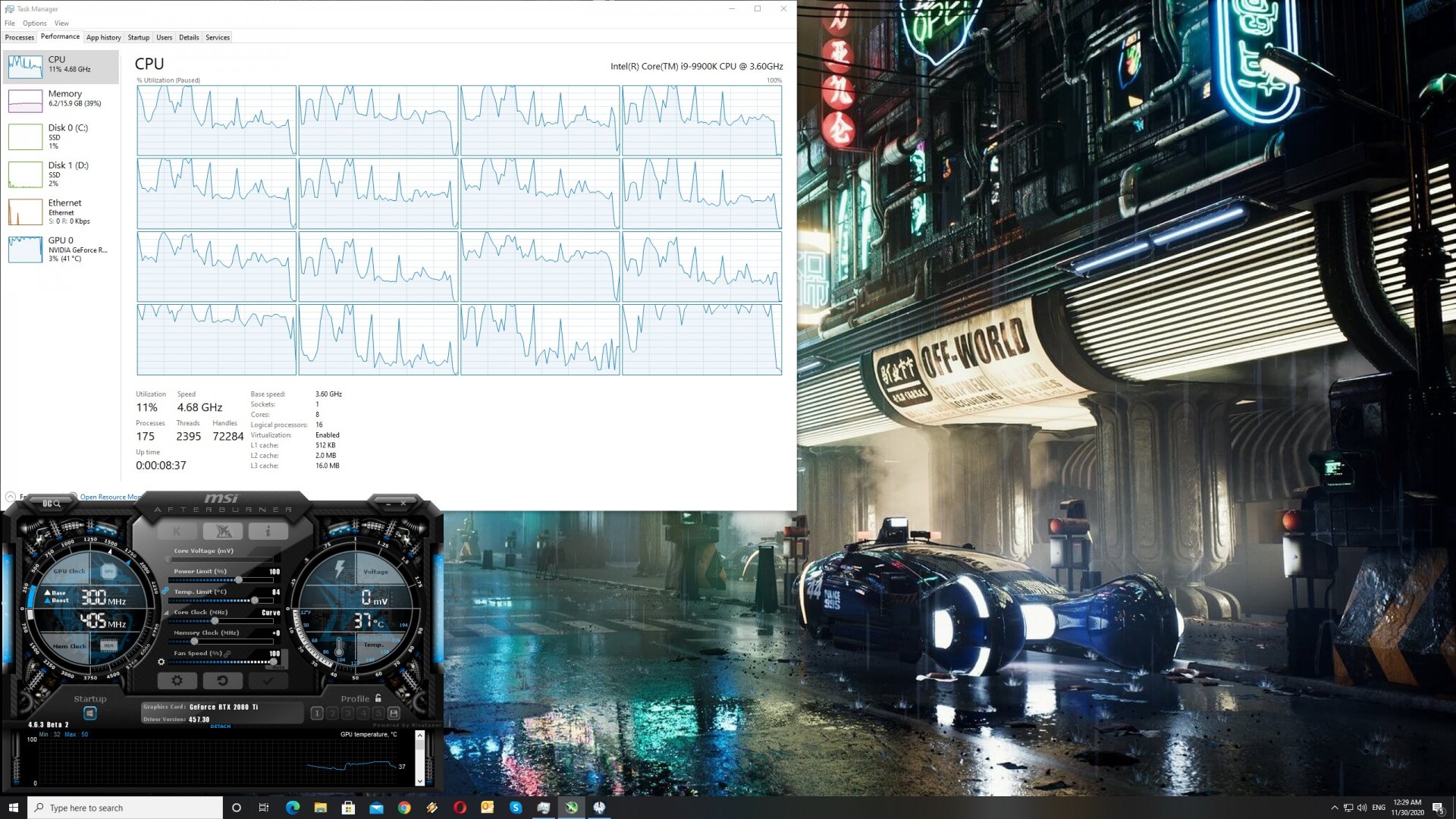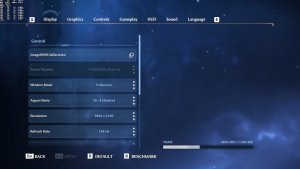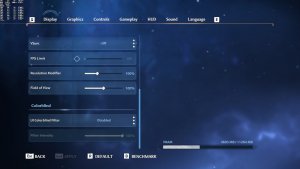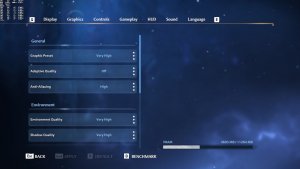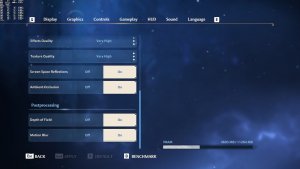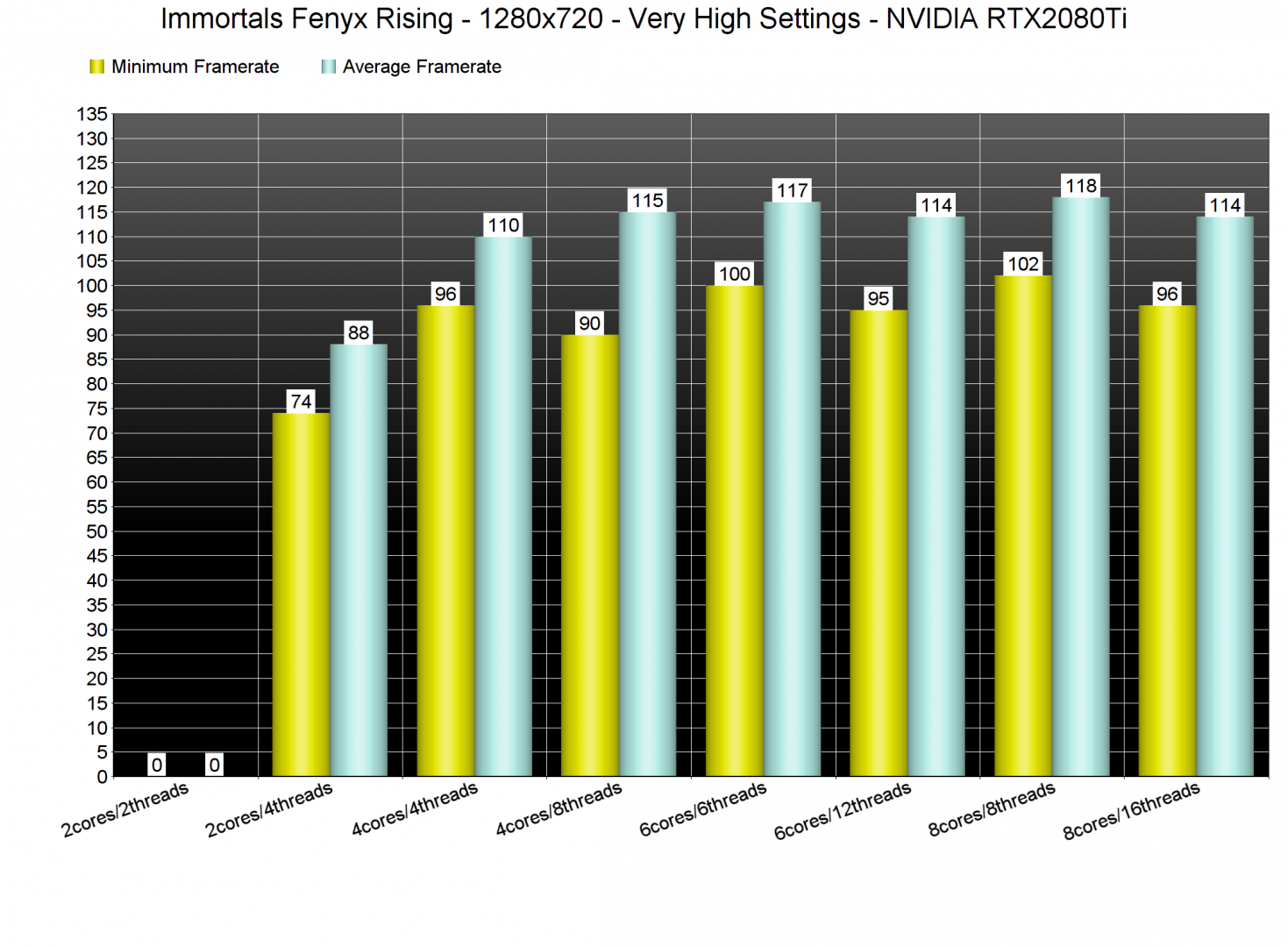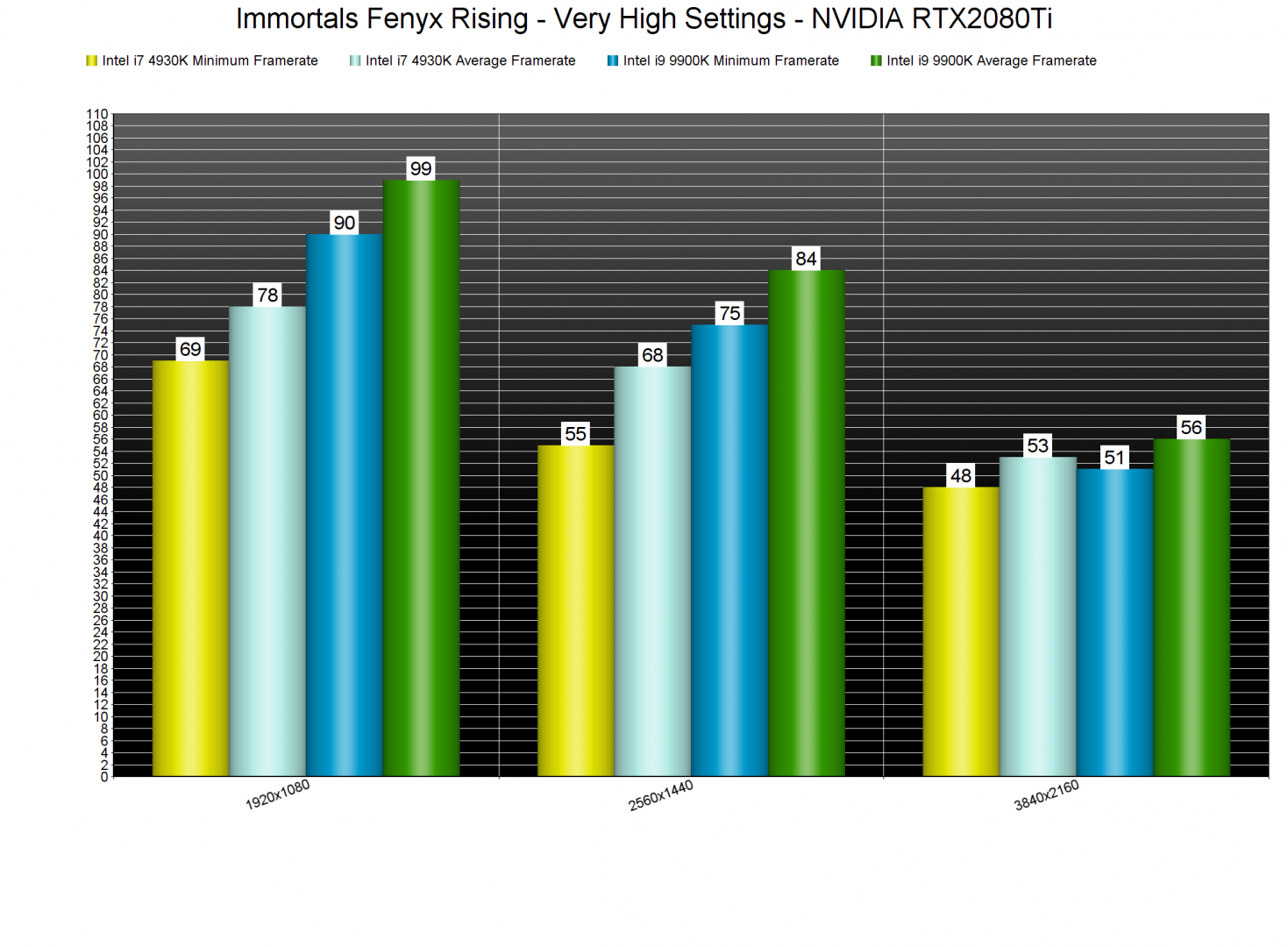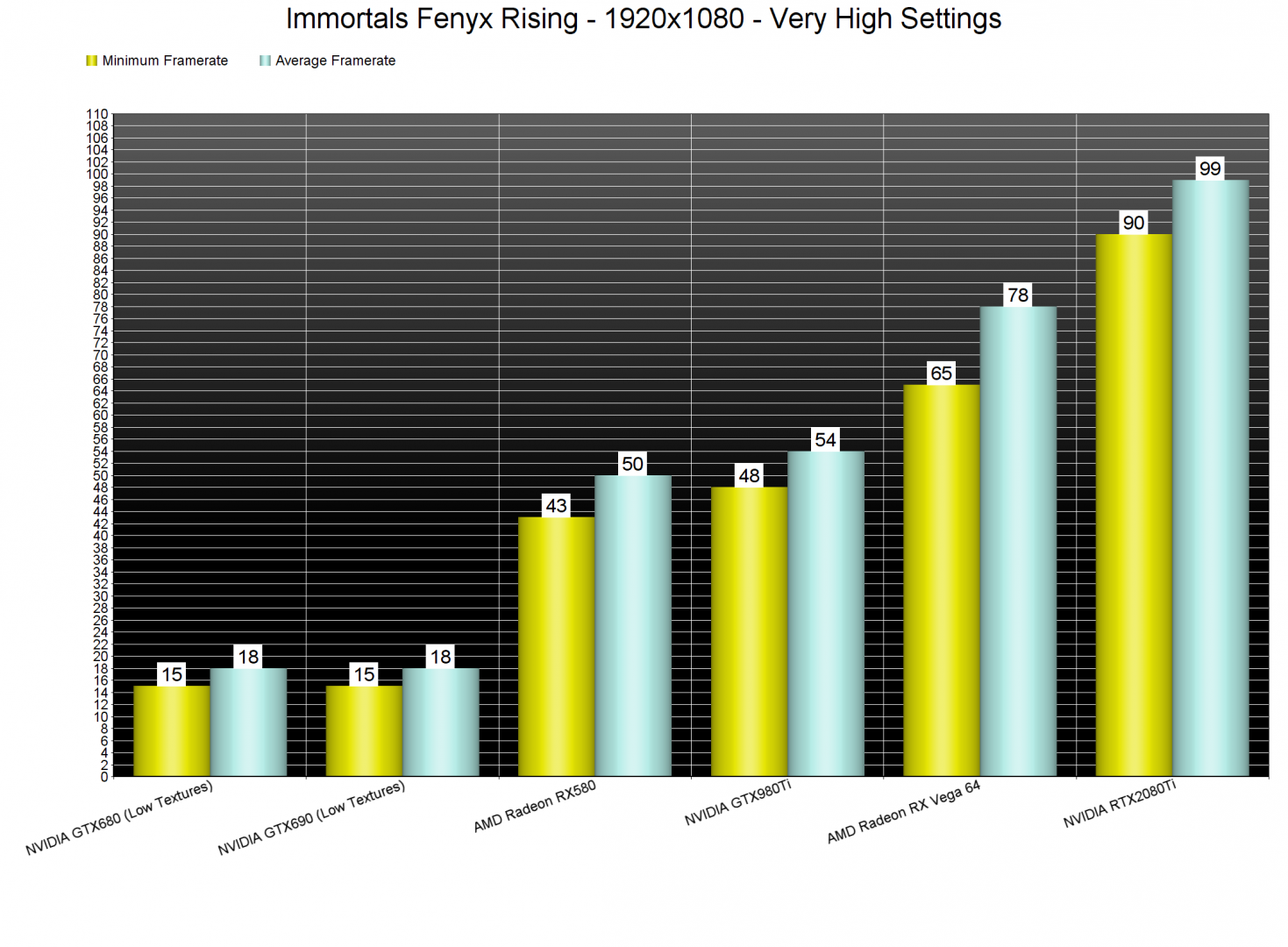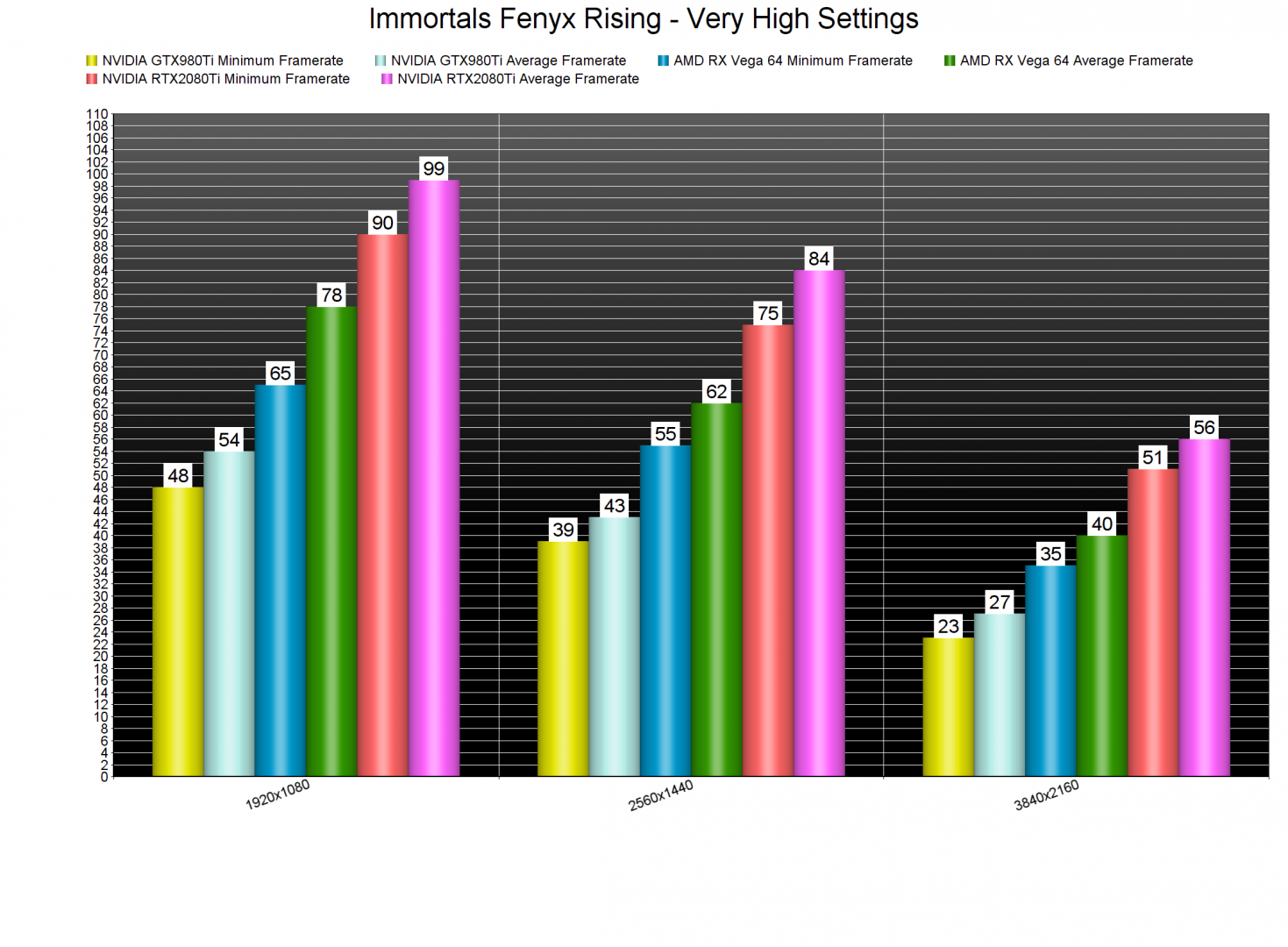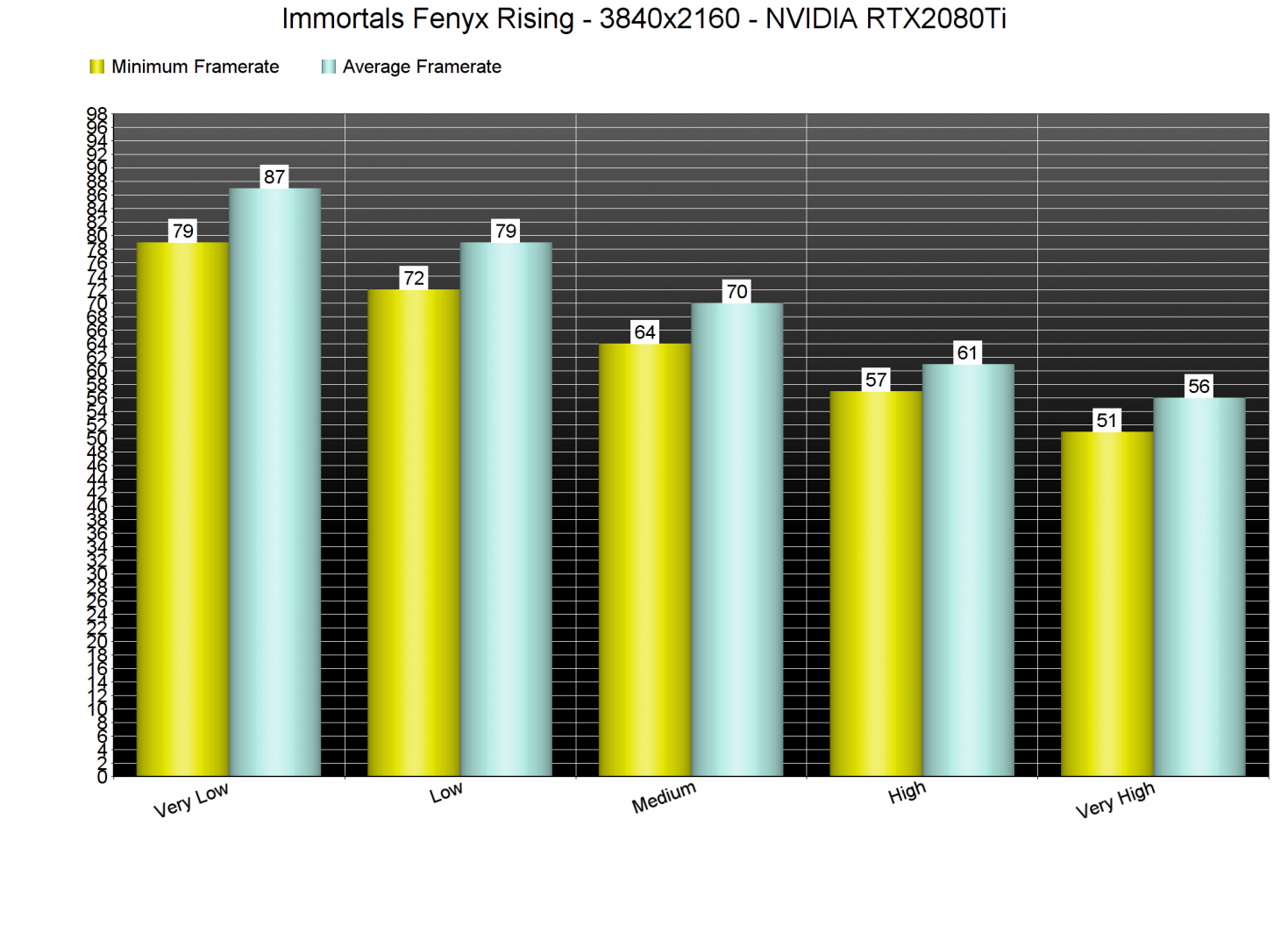Ubisoft has just released a brand new open-world action-adventure game, Immortals Fenyx Rising. Powered by the AnvilNext Engine, it’s time to benchmark it and see how it performs on the PC platform.
For this PC Performance Analysis, we used an Intel i9 9900K with 16GB of DDR4 at 3600Mhz, AMD’s Radeon RX580 and RX Vega 64, NVIDIA’s RTX 2080Ti, GTX980Ti and GTX690. We also used Windows 10 64-bit, the GeForce driver 457.30 and the Radeon Software Adrenalin 2020 Edition 20.11.1 drivers. NVIDIA has not added any SLI profile for this game, meaning that our GTX690 behaved similarly to a single GTX680.
Ubisoft has added a few graphics settings to tweak. PC gamers can adjust the quality of Textures, Environment, Shadows, Anti-Aliasing, and Effects. There are also options for Motion Blur, Depth of Field, Screen Space Reflections and Ambient Occlusion. Additionally, you can find a FOV slider, an FPS limiter, a resolution scaler and a Colorblind setting.
Immortals: Fenyx Rising comes with a built-in benchmark that appears to be representative of the in-game performance. As such, and for both our CPU and GPU tests, we used this benchmark tool.
In order to find out how the game scales on multiple CPU threads, we simulated a dual-core, a quad-core and a hexa-core CPU. And, we are happy to report that Immortals Fenyx Rising does not require a high-end CPU. With Hyper Threading enabled, our simulated dual-core was able to provide a constant 60fps experience at 1280×720 on Very High settings.
Immortals Fenyx Rising was also able to run with 60fps at 1080p/Very High on our older generation Intel CPU, the Intel Core i7 4930K. However, we noticed some weird scaling/performance issues when we ran the game at 2560×1440. For unknown reasons, the game was unable to fully utilize our RTX2080Ti at that resolution. Normally, this would indicate a CPU/Memory limitation. However, the game was running noticeably faster at 1080p (which wouldn’t be the case if we were CPU/Memory limited). Again, we don’t know why the game behaves this way on our Intel i7 4930K.
As we’ve already said, Immortals Fenyx Rising is using the AnvilNext Engine. And, similar to Assassin’s Creed Valhalla, it performs great on AMD’s hardware. In fact, the AMD Radeon RX580 was able to almost match the performance of the GTX980Ti. Not only that but at 1080p/Very High, the GTX980Ti was nowhere close to a 60fps experience.
At 2560×1440, the only GPU that was able to run the benchmark with constant 60fps was the RTX2080Ti. The AMD Radeon RX Vega 64 came close with an average of 62fps. However, we did notice some drops to 55fps. As for 4K/Very High, none of our GPUs was able to offer a constant 60fps experience.
By lowering the graphics settings, PC gamers can achieve some additional performance gains. The performance difference between High and Very High appears to be 9%, whereas the difference between Medium and High is 13%. Similarly, the performance difference between Low and Medium is 12%. Lastly, you can get an additional 10% performance boost by using the Very Low preset.
Graphics-wise, Immortals Fenyx Rising looks pleasing to the eye but it certainly does not justify its high GPU requirements. For instance, Genshin Impact, a game that features a similar art style and open-world environment, runs significantly better. Truth be told, Immortals Fenyx Rising looks better than Genshin Impact. However, the performance difference between these two games is astronomical. At this point, I’m almost certain that AnvilNext needs a major overhaul. After all, Assassin’s Creed Valhalla, another game that uses it, performed poorly on pretty much all platforms (at least when it came to its performance/visual ratio).
In conclusion, Immortals Fenyx Rising can run smoothly on high-end PC systems. While the game does not require a high-end CPU, it certainly needs a powerful graphics card. Still, and when we take into account the visuals it’s pushing, it should be running way better. It’s also worth noting that the game appears to favor AMD’s over NVIDIA’s hardware. Thankfully, we did not experience any crashes or stability issues. Moreover, the game does not suffer from any mouse smoothing or acceleration issues. Ubisoft should further optimize the game via post-launch updates.
Enjoy!
Do note that Shadowplay recording brought a performance hit in the video.

John is the founder and Editor in Chief at DSOGaming. He is a PC gaming fan and highly supports the modding and indie communities. Before creating DSOGaming, John worked on numerous gaming websites. While he is a die-hard PC gamer, his gaming roots can be found on consoles. John loved – and still does – the 16-bit consoles, and considers SNES to be one of the best consoles. Still, the PC platform won him over consoles. That was mainly due to 3DFX and its iconic dedicated 3D accelerator graphics card, Voodoo 2. John has also written a higher degree thesis on the “The Evolution of PC graphics cards.”
Contact: Email


